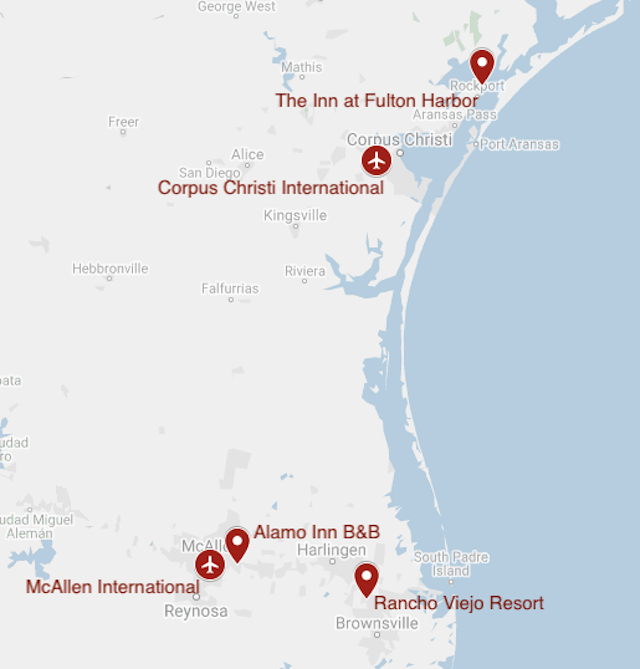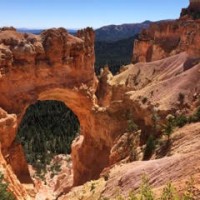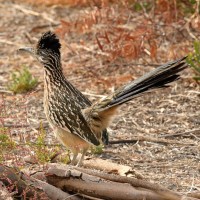- Overview
- Full Itinerary
- Photo Gallery
- Costing
- Travel Details
- Trip Reports
- Guides
- Map
- Know Before You Go
- Other Trips You May Like
South Texas is one of the greatest birding destinations in the United States, and for good reason. Due to its proximity to the humid tropics of Mexico, the subtropical woodlands of the Rio Grande Valley boast over two dozen tropical bird species that spill across the border, from chachalacas to pauraques. Here, colorful Great Kiskadee and personable Green Jay mingle with temperate species. These tropical species occur nowhere else in the United States.
On this South Texas birding tour, we explore three of South Texas’ very most productive regions: Coastal lagoons and shallow wetlands that throng with thousands of shorebirds, herons, and waterfowl (and wintering endangered Whooping Crane); the arid inland expanse of Tamaulipan thorn-scrub, which harbors a collection of species typical of the American Southwest, like Cactus Wren and Pyrrhuloxia; and the subtropical savannas, wetlands, and riparian woodlands of the Lower Rio Grande Valley with their decidedly tropical species like Hook-billed Kite and Altamira Oriole.
Additionally, 300+ species of butterflies have been recorded in the Lower Rio Grande Valley. Many sites we visit on this South Texas nature tour have plantings to attract these butterflies, where we may see a diversity of these delightful creatures, as well as some of the nearly 100 species of dragonflies and damselflies found in the area.




- "This was a low key, relaxed opportunity to see coastal south Texas and the Rio Grande valley, areas replete with unusual and colorful birds, many of which cannot be seen anywhere else in the USA. A three-hour boat ride to the inland water way provided a glimpse of this important marsh habitat as well as good looks at the very rare whooping crane. Boardwalks extending into salt marsh habitats provided intimate views of species that are often secretive and hard to observe. The days spent in the Rio Grande valley provided an opportunity to learn about the history of the region and to see how the river has changed and carved out small bow lakes that harbor waterfowl and marsh birds. Visits to bird feeding stations provided easy" — George Hunt, 2023 Traveler
- "A great trip abundant with birds, wildlife, the number of places visited, good accommodations, and good food reflecting the regions we were visiting. We covered so much territory and saw so many birds in many different environments. It was a rich, rewarding experience." -- 2023 Traveler
- "Our guide was experienced, patient, and a walking encyclopedia on the flora and fauna of this area. He kept us informed and on the move and his normal reserve was broken only in the excitement of chasing a flock of Red Crowned Parrots in Brownsville! I enjoyed every minute of the trip and learned so much from Bryan, our guide, as well as from all of the other tour members." -- 2023 Traveler
- "A very enjoyable week with great leadership seeing many unfamiliar birds in an unfamiliar part of the U.S." — Sydney Daly, 2023 Traveler
- “If you want to see birds and butterflies that you can't see anywhere else, this is the trip to take.” — 2023 Traveler
- “An intense, fast-paced birding trip. Actually identified 46 lifers which was amazing. Saw such a vast variety of shorebirds, in land birds and international birds (parrots and parakeets!).” — Mary Meisel, 2023 Traveler
- “Wonderful trip with 180 bird species. Excellent guides and accommodations.” — Dennis Bozzay, 2023 Traveler
Tour Highlights
- Enjoy a boat tour of Aransas Bay to view the only self-sustaining populations of Whooping Cranes on their wintering grounds, while being entertained by dolphins playing in the wake of the boat
- Visit premier birding sites of the Texas Coastal Bend in Port Aransas, Rockport, and Corpus Christi on this fun South Texas birding tour
- Watch for Pauraque, Clay-colored Thrush, Long-billed Thrasher, Olive Sparrow, and other regional specialties at Laguna Atascosa and Santa Ana NWRs and the World Birding Centers at Estero Llano Grande SP, Quinta Mazatlan, Edinburg Scenic Wetlands, and Bentsen-Rio Grande SP
- Witness close views of Green Jay, Great Kiskadee, Altamira Oriole, and more
- Experience the sight and sounds of hundreds of Red-crowned Parrot as they roost in Brownsville
- Visit wetlands and coastal grasslands of Cameron County for shorebirds, waders, Least Grebe, Green and Ringed Kingfishers, White-tailed Hawk, and Aplomado Falcon
- Marvel at some of the 300+ butterfly species recorded in the valley at the National Butterfly Center
- Learn about the fascinating history of South Texas while travelling through King and Kenedy Counties and visiting ethno-botanist Benito Trevino’s Rancho Lomitas




Trip Itinerary
Itineraries are guidelines; variations in itinerary may occur to account for weather, road conditions, closures, etc. and to maximize your experience.
Mon., Nov. 10 Arrival in Corpus Christi | Hans and Pat Suter Wildlife Refuge | Mustang Island | Port Aransas | Rockport Beach Park
Welcome to one of America’s top birding hotspots, often referred to as the Texas Tropics. If you come from winter-bound areas, warm air, fresh breezes, and brilliant blooms let you know you’ve reached an exotic realm without ever leaving the USA!
For a group pick up, please plan to arrive at Corpus Christi International Airport (CRP) no later than 1:00 PM. From the airport, we head north to Rockport with some productive birding stops on Mustang Island along the way. After checking into our hotel, we enjoy dinner at one of our favorite restaurants, sampling some of the wonderful local seafood. This first group meal also serves as an opportunity to get acquainted with your guide and fellow traveling companions.
Accommodations at the Inn at Fulton Harbor, Fulton, TX (D)
Tues., Nov. 11 Whooping Crane Boat Tour | Lamar & Goose Island State Park
Although it remains one of the most endangered birds in North America, Whooping Crane populations have steadily increased from a low of fifteen birds in the early twentieth century to well over four hundred. Nonetheless, despite ongoing conservation efforts to create new populations, Aransas National Wildlife Refuge hosts the wintering grounds of the only remaining self-sustaining population. On our first morning in Texas, we take a boat trip to Aransas National Wildlife Refuge to observe these special birds. While on the boat we also look for several species of herons, egrets, and even Roseate Spoonbill. Captain Tommy guides us, aiming to get within close range of these remarkable creatures. With everyone alert on deck, we often find Long-billed Curlew, American Oystercatcher, Seaside Sparrow, and Common Loon, as well as a number of other waterfowl and shorebirds
After lunch in Rockport, we drive north to the Lamar Peninsula and Goose Island State Park with their Live Oak woodlands, grasslands, and coastal and freshwater wetlands. Here we should get close views of Brown and American White Pelicans competing for food at the fish-cleaning stands, Roseate Spoonbill and Black-bellied Whistling-Duck on the 8th Street pastures, and Black-crested Titmouse, Long-billed Thrasher, and other species at the feeding stations. Non-avian species we may encounter include American Alligator, White-tailed Deer, Javelina (Peccary) and perhaps even a Bobcat. Tonight we enjoy dinner at another great local restaurant.
Accommodations at the Inn at Fulton Harbor (B,L,D)
Wed., Nov. 12 Rockport | Indian Point Park | Hazel Bazemore County Park, Corpus Christi | South Texas Ranchlands
After an early breakfast, we enjoy some birding around the Rockport area in the morning, including the Leonabelle Turnbull Birding Center, in search of Blue-Winged Teal, Northern Shoveler. Mottled Ducks and Black-necked Stilts should also be present, as well as American Avocets. We’ll stay in Port Aransas for a bit, exploring the jetty and looking for Ruddy Turnstone, Willet, and Sandwich Tern. We then continue our way down Mustang Island, stopping at a possible spot for Aplomado Falcon before lunch in Corpus Christi.
After lunch, we’ll head a few hours south toward Brownsville, but will make one more stop outside of Corpus Christi, at Hazel Bazemore County Park. Known for its famous fall hawk migration watching, this can be a wonderful birding location year-round. This park is a favorite spot for an assortment of doves such as Inca, Common Ground, White-tipped, and White-winged.
On the trek to Brownsville, our home for the next few nights, we will want to keep a look out for Harris’s Hawk and maybe even a Greater Roadrunner. Time permitting, we may visit a few local spots in Brownsville after we arrive.
Accommodations in Brownsville(B,L,D)
Thurs., Nov. 13 Old Port Isabel Road | Bayview Resacas | Laguna Atascosa NWR | South Padre Island
After breakfast, we drive straight to Old Port Isabel Road. Birds here include White-tailed Hawk, Long-billed Curlew, Cassin's Sparrow and, with luck, Aplomado Falcon. Extirpated by the 1950s from much of its original range in the United States, this elegant falcon is making a comeback in this part of the world due to reintroduction efforts by the Peregrine Fund.
From there we head towards Laguna Atascosa by way of the Bayview resacas, where we have chances of Anhinga, Least Bittern, and kingfishers among other species. Lying on the western shore of the Laguna Madre, Laguna Atascosa National Wildlife Refuge protects over 65,000 acres of coastal habitats. More than 410 species of birds have been recorded here, including Aplomado Falcon. At the visitor center and nearby trails, we check out the feeders for close-up views of Green Jay, Long-billed Thrasher, Olive Sparrow, and perhaps a herd of Javelina. With luck, we may also encounter Coyote, Bobcat, Nine-banded Armadillo, Texas Tortoise, or even (but very improbably!) an Ocelot.
After lunch at a local restaurant, we then head east. At the South Padre Island Convention Center, a boardwalk provides access to wetlands along the Laguna Madre that can provide incredible views of normally secretive rails such as Clapper and Virginia. There are also many other species to see here, including Reddish Egret, and Tricolored and Little Blue Herons, Black Skimmer, Brown and American White Pelicans, American Avocet, and various other shorebirds, terns, and waders. We also hope to find Piping Plover?one of the country’s most threatened shorebirds. We also visit the Birding and Nature Center at South Padre with its butterfly garden and chances of “Mangrove” Yellow Warbler in its stands of Black Mangrove.
On the return to the hotel, we shall stop briefly at wetlands along Hwy 48 in search of Wilson’s Plover, Gull-billed Tern, and White-tailed Hawk.
Accommodations in Brownsville (B,L,D)
Fri., Nov. 14 Sabal Palm Sanctuary | Brownsville Landfill | Boca Chica | University Resaca, Brownsville | Oliveira Park
After breakfast at the hotel, our first destination is Sabal Palm Sanctuary, formerly a National Audubon reserve but now managed by the non-profit Gorgas Foundation. They have done a wonderful job of enhancing the sanctuary’s already outstanding habitats including wetlands and one of the two last remnants of native Sabal Palm forest in the U.S. There are also bird feeding areas which attract several of the valley specialties, including Olive Sparrow, Buff-bellied Hummingbird, and both Altamira and Hooded Orioles. The variety of other wildlife here is outstanding, with butterflies such as Mexican Blue and Zebra Heliconia, and the endangered Speckled Racer among the many reptiles.
We shall then make a brief visit to the iconic (at least among birders) Brownsville Landfill. This became renowned as the only regular site for Tamaulipas Crow in the U.S., but numbers plummeted in the early years of the century and there have been few subsequent records until very recently. We keep our fingers crossed.
After lunch (not at the landfill!) we drive the 18 miles of the Boca Chica TX-4 highway, which parallels the Rio Grande all the way to the Gulf of Mexico across a variety of habitats, including thorn-scrub, coastal grasslands, and salt-flats. The highway also bisects Elon Musk’s Space X complex. This is a wonderful road for raptors, including White-tailed Hawk and possibly Aplomado Falcon, and the flats can hold thousands of shorebirds and dozens of Reddish Egrets. And there’s always a chance of Northern Gannets from the beach.
The resaca on the University of Texas’s beautiful campus in Brownsville is our next stop in the hope of Green and Ringed Kingfishers. Anhinga and Black Phoebe are regulars, and there’s been a wintering Common Black Hawk here in recent years.
Oliveira Park, the site of the largest parrot roost in Texas, is our last stop today. There are sometimes as many as 300 individuals of these colorful (and noisy!) birds roosting together. Red-crowned Parrot is the most numerous, but Red-lored, White-fronted, Yellow-headed, and Lilac-crowned Parrots are all possible.
Accommodations in Brownsville (B,L,D)
Sat., Nov. 15 Santa Ana NWR | Estero Llano Grande State Park
This morning we head towards Santa Ana National Wildlife Refuge, which protects 2,000 acres in the heart of the Rio Grande Valley Wildlife Corridor. With well over 300 species of birds recorded, many birders regard this reserve as the highlight of a South Texas visit.
Extensive trails allow exploration of wetlands, fields, and Tamaulipan thorn-scrub habitats. We listen for the boisterous calls of Couch’s Kingbird and Great Kiskadee, as well as the repeated whistle of the diminutive Northern Beardless-Tyrannulet.
To get eye-level views of Gray Hawk and a chance at seeing the rare Hook-billed Kite, there is the option of going up the hawk watch tower. Santa Ana is also a great site to see all three North American kingfishers, although their day-to-day presence depends on water levels at the various impoundments. At red-flowering shrimp plants we check for Buff-bellied and other hummingbirds. Least Grebe may cruise the small ponds and we keep our eyes open for Sora, White and White-faced Ibises, Neotropic Cormorant, and wintering shorebirds.
From one of the oldest reserves in the valley, we then visit one of the newest: Estero Llano Grande State Park in Weslaco. Amazingly, it has already accrued a bird list almost as impressive as that of its older cousin. It offers a wonderful variety of wetland and woodland habitats with plenty of easy walking trails that attract more birders than just about anywhere else in the valley. Some of the species we look for here include Cinnamon Teal, Fulvous Whistling Duck, Yellow-crowned Night-Heron, Common Pauraque, Green Kingfisher, Yellow-headed Blackbird, and Clay-colored Thrush. We then continue west to our lodgings for the next three nights in delightful McAllen.
Accommodations in McAllen (B,L,D)
Sun., Nov. 16 West Along the Rio Grande | Salineño | Falcon State Park | Rancho Lomitas
Today we venture into higher and more arid lands to the west, following the Rio Grande River. We pass through Rio Grande City and Roma—once the most inland port for steamship traffic on the Rio Grande. We are likely to find a number of desert birds, which could include Verdin, Cactus Wren, Black-throated Sparrow, Black-tailed Gnatcatcher, Bewick’s Wren, and Pyrrhuloxia.
During the earlier part of the morning we station ourselves along the Rio Grande, hoping for fly-by Red-billed Pigeon or perhaps Hook-billed Kite or Muscovy Duck. Hopefully, we are able to catch sight of two beautiful songbirds, Altamira and Audubon’s Orioles at the wonderful feeders maintained by Lois Hughes and Merle Ihne. And there is just a chance of a White-collared Seedeater in cane beds growing along the river! Lunch is again a picnic provided by the Inn.
Continuing a short distance, we visit the 573-acre Falcon State Park adjacent to Falcon Dam, with chances of desert scrub species such as Greater Roadrunner, Curve-billed Thrasher, and even Northern Bobwhite.
In the afternoon we visit Rancho Lomitas, a private ranch owned by Benito Trevino. Benito is a leading ethno-botanist and a fount of knowledge on local history and culture. An added attraction is that his land is also very birdy with good chances of Audubon’s Oriole and Scaled Quail at the feeders.
Accommodations in McAllen (B,L,D)
Mon., Nov. 17 Bentsen-Rio Grande Valley State Park | National Butterfly Center | Anzalduas County Park | Edinburg Scenic Wetlands
Today we visit Bentsen-Rio Grande Valley State Park, one of the valley’s World Birding Center sites. Bentsen protects an array of habitats that support most of the valley’s special birds. By walking short trails, we explore the riverine forest, ponds, thorn-scrub, and mesquite. We hope to see most of the South Texas specialties here including Plain Chachalaca, Altamira Oriole, White-tipped Dove, Green Jay, Golden-fronted Woodpecker, Northern Beardless-Tyrannulet, Clay-colored Thrush, and Great Kiskadee.
If there is interest, we could visit the gardens at the North American Butterfly Association’s (NABA) National Butterfly Center, only a few minutes from Bentsen. During its short existence this site has already produced a huge number of butterfly species, including several first U.S. records. A feeding station at the park often produces chachalacas, Altamira Oriole, Olive Sparrow, Long-billed Thrasher, and Clay-colored Thrush.
For lunch we enjoy a picnic from the inn, then head for the World Birding Center site at Edinburg Scenic Wetlands where two major ponds draw in ducks and wading birds by the score, as well as kingfishers of all three species. The extensive native-plant gardens are a haven for wintering warblers, and the feeders attract Buff-bellied and other hummingbirds. Nearby McAllen has a regular evening roost of Green Parakeet that sometimes number in the hundreds; we may visit their roosting area before dinner.
Accommodations in McAllen (B,L,D)
Tues., Nov. 18 Quinta Mazatlan, McAllen | Departures
We make sure that everyone with booked flights who has not made other arrangements gets to the McAllen Miller International Airport (MFE) by NOON. It’s only a 15 minute or so drive from McAllen so there’s time in the morning to do some last-minute birding at Quinta Mazatlan, an attractive area with easy walking, most of the valley specialties, a historic adobe hacienda, all less than 5 minutes from the airport, ideal for a few hours of relaxed birding before the flight home. Please make flights out after 12:00 PM. (B)
Cost of the Journey
The cost of the journey is per person, based on occupancy: $3790 DBL / $4770 SGL, from Corpus Christi, TX, departing McAllen, TX.
The cost includes: eight nights’ accommodations, all meals as noted in the itinerary, airport transfers, ground transportation in vans, professional guide services, park and other entrance fees, and miscellaneous program expenses.
The cost does not include: round-trip airfare to Corpus Christi and from McAllen, personal expenses such as laundry, telephone, drinks from the bar, and gratuities for luggage handling or other services. Guide gratuities are at your discretion.
Travel Details
Please plan to make air travel plans only after the minimum group size has been met. We will send you a confirmation email as soon as the trip has been confirmed.
Please plan to make air travel plans only after the minimum group size has been met. We will send you a confirmation email as soon as the trip has been confirmed.
Arrival Airport: Corpus Christi International Airport (CRP)
Arrival Details: Plan flights to arrive November 10, 2025 no later than 1:00 PM.
Departure Airport: McAllen International Airport (MFE)
Departure Details: Plan to depart November 18, flights leaving after 2:00 PM. The McAllen Miller International Airport (MFE) is a 15-minute drive from town and we will arrive there by 12:00 PM. We plan to spend that morning birding with an airport drop-off at the end. Please plan your flight out of the McAllen Airport (MFE) after 2:00 PM.
Alternative Departure Plan for Southwest Airlines If you are flying on Southwest Airlines, you may wish to fly out of Valley International Airport (HRL) in Harlingen, which is a 40-minute drive from McAllen and transportation there will cost approximately $35.
Travel Tip: If you want to arrive a day or two early, Corpus Christi is great for either relaxing on the beautiful beaches or sightseeing. At the USS Lexington Museum you can learn about naval history aboard the Essex-class aircraft carrier built during World War II. The museum is a short drive if you have a rental car, or you can use a taxi or Uber/Lyft. Other area attractions include the Texas State Aquarium and the Corpus Christi Museum of Science and History. You will need to return to the airport by 1:00 pm on November 11.
Hotel Recommendations: If you want to relax and stay near the airport after arrival, we recommend: Best Western Corpus Christi Airport Hotel (361) 289-8200 La Quinta Inn & Suites by Wyndham Corpus Christi Airport (361) 299-2600 Does staying near the waterfront and exploring the many shops and restaurants sound interesting? We would recommend: Best Western Corpus Christi (361) 883-5111 Omni Corpus Christi Hotel (361) 887-1600.
Extend Your Stay If you would like to extend your stay in the valley, you can add additional nights in McAllen, but we would strongly suggest renting a car at the McAllen Airport if you choose this option. Birding sites are scattered making transportation more difficult. If it is the final night to take an early flight out the next day, we recommend you book and stay at the Radisson Hotel at the McAllen Airport as it’s adjacent to Quinta Mazatlan, a top birding site, and you could spend additional time walking around and birding there. If you would like to book additional nights in McAllen, here is contact information for the hotels: Radisson Hotel McAllen Airport (956) 682-7234.
Browse below for trip reports and species lists from past versions of this and other tours from this destination.
Texas
Big Bend & Davis Mountains
- April 2011
- April 2012
- April 2014
- April 2015
- April 2016
- August 2016
- April 2017
- April 2019
- May 2019
- April 2021
- May 2021
- April 2022
- April 2022
- May 2022
- April 2023
- April 2023
- May 2023
- April 2024
Big Bend Monsoon Madness
- August 2016
- August 2018
- July 2019
South Texas
- February 2012
- February 2014
- February 2018
- February 2019
- March 2019
- February 2020
- April 2021
- September 2021
- November 2021
- February 2022
- March 2022
- October 2022
- November 2022
- January 2023
- February 2023
- March 2023
- November 2023
- December 2023
- January 2024
- January 2024
- March 2024
- November 2024
- February 2025
Texas Coast
- April 2012
- April 2014
- April 2019
- April 2021
- April 2022
- April 2023
- April 2024
- April 2025
Texas Hill Country
- April 2013
- April 2015
- April 2017
- April 2018
- April 2019
- April 2021
- April 2022
- April 2023
- April 2024 (Solar Eclipse Tour)
- April 2025
-
Bryan Calk

Bryan started birding at Fort Clark Springs in southwest Texas when he was 10 years old and never stopped. He got his first taste of guiding while leading trips for the Rio Brazos Audubon Society during college. After graduating from Texas A&M in 2015 with a degree in genetics, Bryan worked as an avian field biologist on several projects across Texas and New Mexico. Currently residing in Albuquerque as a professional birding tour guide, he leads field tours, workshops, and youth birding programs across the US. In his free time, Bryan enjoys butterflies, searching for herps, photography, art, cooking, and gardening.
Other trips with Bryan Calk
-
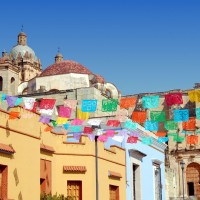 Grand Oaxaca: Valley, Mountains & Coast One single left!October 7 - 18, 2025
Grand Oaxaca: Valley, Mountains & Coast One single left!October 7 - 18, 2025 -
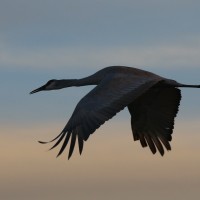 New Mexico Nature & Culture Only two spaces left!December 6 - 13, 2025
New Mexico Nature & Culture Only two spaces left!December 6 - 13, 2025 -
 Belize: Three Great Lodges Only two spaces left!January 5 - 15, 2026
Belize: Three Great Lodges Only two spaces left!January 5 - 15, 2026 -
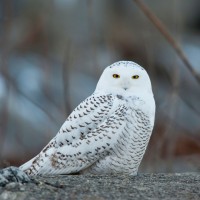 Minnesota: Winter Owling Tour FULL - See our February departure!January 25 - 30, 2026
Minnesota: Winter Owling Tour FULL - See our February departure!January 25 - 30, 2026 -
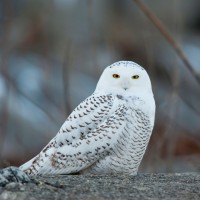 Minnesota: Winter Owling TourFebruary 1 - 6, 2026
Minnesota: Winter Owling TourFebruary 1 - 6, 2026 -
 Arizona: Sky Island Winter Birding BlitzFebruary 21 - 27, 2026
Arizona: Sky Island Winter Birding BlitzFebruary 21 - 27, 2026 -
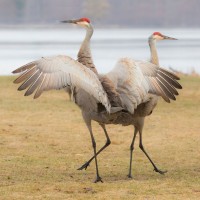 Nebraska's Platte River Prairies & Sandhill Crane Migration A Private Tour for The Nature ConservancyMarch 15 - 19, 2026
Nebraska's Platte River Prairies & Sandhill Crane Migration A Private Tour for The Nature ConservancyMarch 15 - 19, 2026 -
 Western Panama: Tranquilo BayApril 7 - 14, 2026, w/Mt. Totumas extension
Western Panama: Tranquilo BayApril 7 - 14, 2026, w/Mt. Totumas extension -
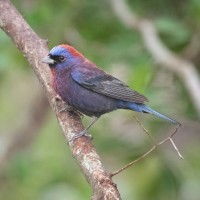 Texas Hill CountryApril 24 - 29, 2026
Texas Hill CountryApril 24 - 29, 2026 -
 Ohio: The Biggest Week in BirdingMay 13 - 20, 2026
Ohio: The Biggest Week in BirdingMay 13 - 20, 2026 -
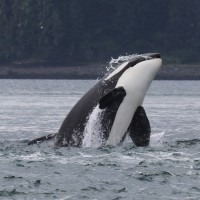 Alaska’s Northern Passages & Glacier BayJuly 11 - 18, 2026
Alaska’s Northern Passages & Glacier BayJuly 11 - 18, 2026 -
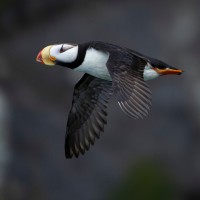 Alaska SamplerAugust 10 - 18, 2026
Alaska SamplerAugust 10 - 18, 2026 -
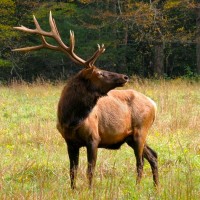 Yellowstone in The FallSeptember 26 - October 2, 2026
Yellowstone in The FallSeptember 26 - October 2, 2026
-
-
Vernie Aikins

Vernie fell in love with birding in Southern Arizona in 2011 through his love of photography, starting out with just a camera and guide book. He started guiding in 2021 with his wife’s non-profit S.A.A.W.R. and the Tucson Audubon leading bird outings for people with disabilities. Though Vernie is primarily the Office Administrator at Naturalist Journeys, he does get the chance to guide from time to time. His excitement in seeing a Turkey Vulture (his favorite bird) for the 50th time or a lifer is contagious, and he has a true passion for helping others find, identify, and enjoy birds. As an avid mountain biker, he also started a non-profit focusing on trail maintenance and reopening trails after the devastating fires in the Catalina Mountains in 2003, overseeing thousands of hours of volunteer trail work. His favorite place to be is in Southern Arizona exploring along the Santa Cruz River or high up in one of the Sky Islands.
Other trips with Vernie Aikins
-
 Veracruz, Mexico: River of Raptors & MoreOctober 16 - 27, 2025
Veracruz, Mexico: River of Raptors & MoreOctober 16 - 27, 2025 -
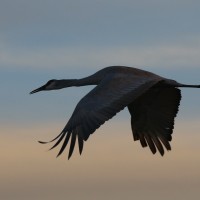 New Mexico: Winter Birds & Grand Landscapes FULL - See New Mexico Nature & Culture in December!January 18 - 26, 2026
New Mexico: Winter Birds & Grand Landscapes FULL - See New Mexico Nature & Culture in December!January 18 - 26, 2026 -
 Birds & Mammals of Ecuador's Andes Conservation in Action: Sachatamia, Napo Wildlife Center & Termas de PapallactaMarch 5 - 18, 2026
Birds & Mammals of Ecuador's Andes Conservation in Action: Sachatamia, Napo Wildlife Center & Termas de PapallactaMarch 5 - 18, 2026 -
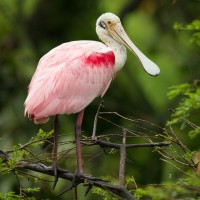 Louisiana: Birds, Bayous & BeignetsApril 16 - 22, 2026
Louisiana: Birds, Bayous & BeignetsApril 16 - 22, 2026 -
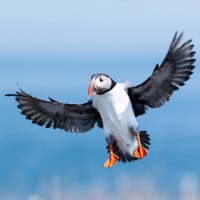 Maine Puffin Extravaganza Machias Seal Island: Up Close and PersonalJune 8 - 14, 2026
Maine Puffin Extravaganza Machias Seal Island: Up Close and PersonalJune 8 - 14, 2026 -
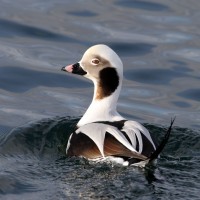 Olympic Peninsula Fall ExplorerSeptember 10 - 17, 2026
Olympic Peninsula Fall ExplorerSeptember 10 - 17, 2026
-
Essential Information +
Packing List +
Suggested Reading List +
Useful Links +
Photo credits: Banners: Yellow-throated Warbler (Bryan Calk), Group Birding (Delsa Anderl), White-faced Ibis (Bryan Calk), Group Birding (Delsa Anderl) Thumbnails: Roseate Spoonbill (Bryan Calk), Green Jay (Bryan Calk), Northern Mockingbird (Byron Calk), Ladder-backed Woodpecker (Bryan Calk), Vermillion Flycatcher (Steve Wolfe), Broad-tailed Hummingbird (Bryan Calk), Audubon’s Oriole (Bryan Calk), Ringed Kingfisher (NJ Stock)




















